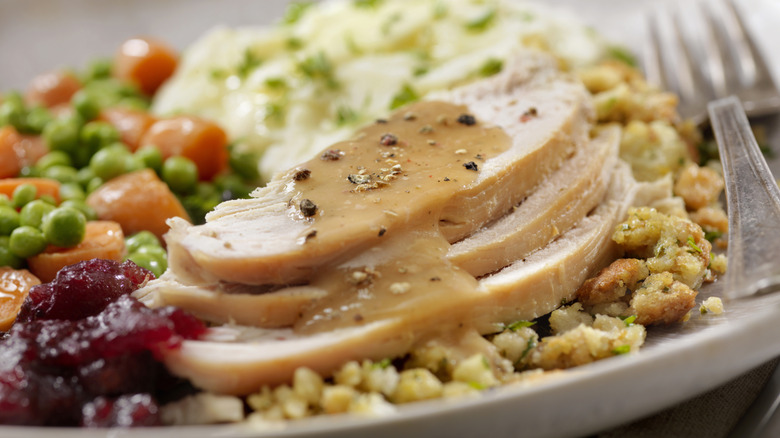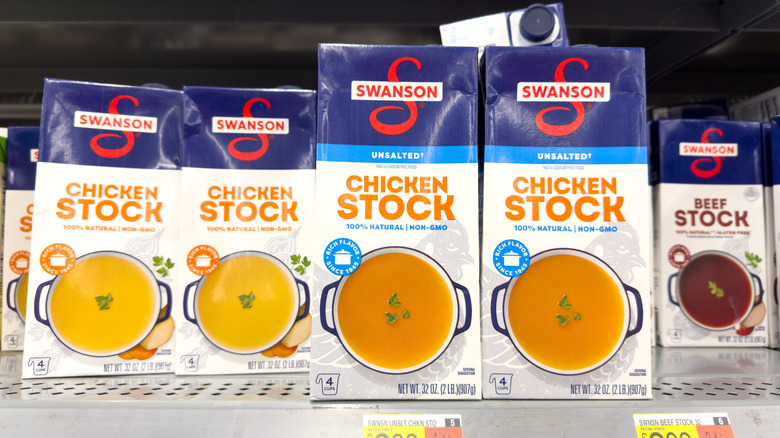The Difference Between Using Chicken Broth Vs Stock In Gravy
Whether you're making America's go-to turkey on Thanksgiving or simply preparing for a Sunday roast, don't forget about the real MVP: gravy. If you're the designated gravy maker in your household, you may have noticed by now that a roasted bird doesn't always produce enough natural juices to make an entire pot. You don't want the gravy boat to run dry before it gets around the entire table, of course, which is why boxed chicken broth and stock really comes in handy around the holidays. Both liquids will get your gravy gears going, but keep in mind that they are not exactly the same. Stock is made from animal bones, so it has a thicker texture from all the naturally dissolved collagen, and it's also usually unseasoned. Broth, on the other hand, is typically made from meat, so it has a thinner texture, and it's almost always seasoned.
The differences between stock and broth can be pretty subtle when it comes to making gravy, and both will get the job done in a pinch, but if you have a choice between the two it comes down to what your recipe lacks. A good rule of thumb is to use chicken stock when gravy needs more volume and mouthfeel, but broth is better when it needs volume and flavor.
Don't forget the drippings
It might be tempting to make a whole batch of gravy just with chicken broth and be done with it, but flavor is important, so don't make this common mistake. Good-tasting gravy needs all of the roasty, toasty umami flavors it can get, so always include any browned pan drippings that you can scrape up from the roasting pan. Even though it might be easier to make gravy ahead of time, especially for holiday dinners when stove space is scarce, gravy is one of those dishes that is better left to the last minute, so you can collect all the turkey or chicken juices and drippings.
If you're making your protein outside in the fryer, on the grill, or with any other method that doesn't collect the drippings, you can make up for the loss by following a turkey giblet gravy recipe as the flavor base. Cook them with oil or butter in a saucepan to get some of those all-important brown spots known as "fond" to form, then deglaze the pan to collect all the bits before you add any other ingredients. Once you have that flavor base, you can scale the volume of the batch of gravy up to size with stock or broth.


